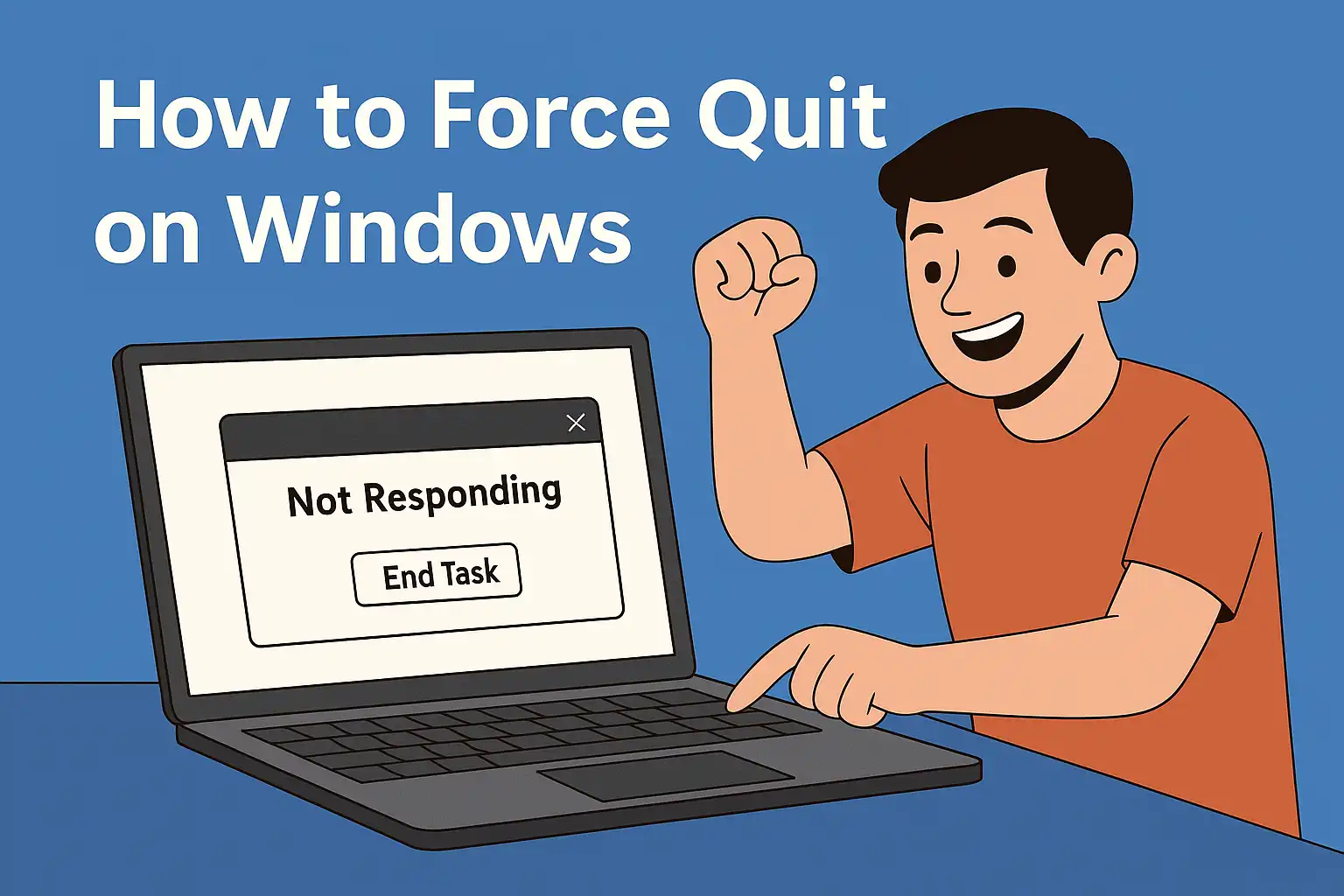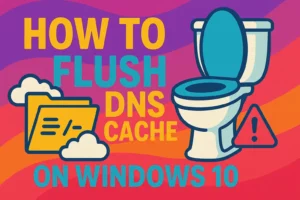Table of Contents
Ever had a program on your Windows PC freeze and refuse to close? We’ve all been there. In this post, you’ll learn exactly how to force quit on Windows using multiple methods. Whether you’re dealing with a stubborn app, an unresponsive window, or just looking for the fastest keyboard shortcut — this guide has you covered.
Introduction to Force Quit
When an application stops responding on your Windows computer, knowing how to force quit an app is a crucial troubleshooting skill. Force quitting allows you to regain control over your system by closing a problematic app that refuses to shut down through normal means. Whether you’re dealing with a frozen window or a stubborn process, Windows offers several reliable methods to force quit, including using Task Manager, keyboard shortcuts, and the Command Prompt. By mastering these force quit techniques, you can efficiently manage running tasks, resolve issues quickly, and keep your workflow on track.
Understanding App Freezes
App freezes are a common frustration for Windows users, often occurring when an application stops responding to your commands. These freezes can result from software bugs, insufficient system resources, or even hardware conflicts. When apps freeze, they may ignore your attempts to close them, leaving you stuck and unable to continue your work. In these situations, it’s important to know how to force quit using methods like Task Manager or Command Prompt. Understanding why app freezes happen and how to respond ensures you can quickly force quit unresponsive apps and restore normal operation to your computer.
1. How to Force Quit on Windows Using Task Manager
This is the most common and reliable way to force close applications in Windows. Task Manager is one of the easiest ways to force quit a troublesome app or a program that has stopped working. It allows you to view all programs running and manage their processes. Using Task Manager is especially helpful when an unresponsive app or troublesome app refuses to close, and function keys like F4 can also be used in combination with other shortcuts.
Steps:
- Press Ctrl + Shift + Esc to open Task Manager directly. You can also press Control + Alt + Delete to access the options screen.
- Find the unresponsive program in the list.
- Click it, then press “End Task”. Click End Task to complete the step and force quit the unresponsive app.
Pro Tip: You can also press Windows + X to open a menu and choose Task Manager as another method.
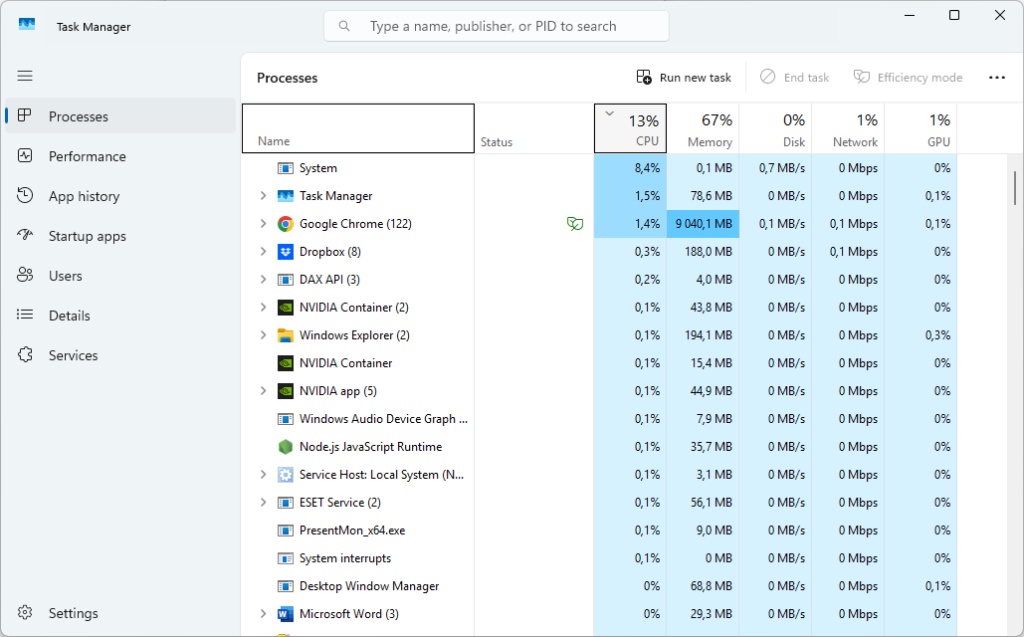
2. Use Alt + F4 to Close a Window
To quickly close the active window, press Alt + F4. This keyboard shortcut uses the function keys and is useful for quickly closing windows. This doesn’t always work if the app is fully frozen, but it’s fast and easy when it does.
Best for: Apps that are slow but still responsive to keyboard commands.
3. Use Command Prompt to Kill a Program
If Task Manager doesn’t work, go old-school with the Command Prompt. You can open the run dialog box by pressing Windows + R, then type cmd to launch the command prompt app.
- Search for cmd and run it as Administrator to launch the command prompt app. The command prompt app is usually installed on most Windows computers.
- In the command prompt window, type tasklist and hit Enter — this will show all programs running.
- Type taskkill /IM programname.exe /F and press Enter. Make sure to use the full program name with the .exe extension.
Example: To force close Chrome, use: taskkill /IM chrome.exe /F
To quit Firefox, type: taskkill /IM firefox.exe /F
A confirmation message will appear if the process was successfully terminated.

4. Use Windows Powershell
PowerShell also allows force quitting an application with a similar approach:
Stop-Process -Name "notepad" -ForceJust replace “notepad” with the name of the app you want to kill.
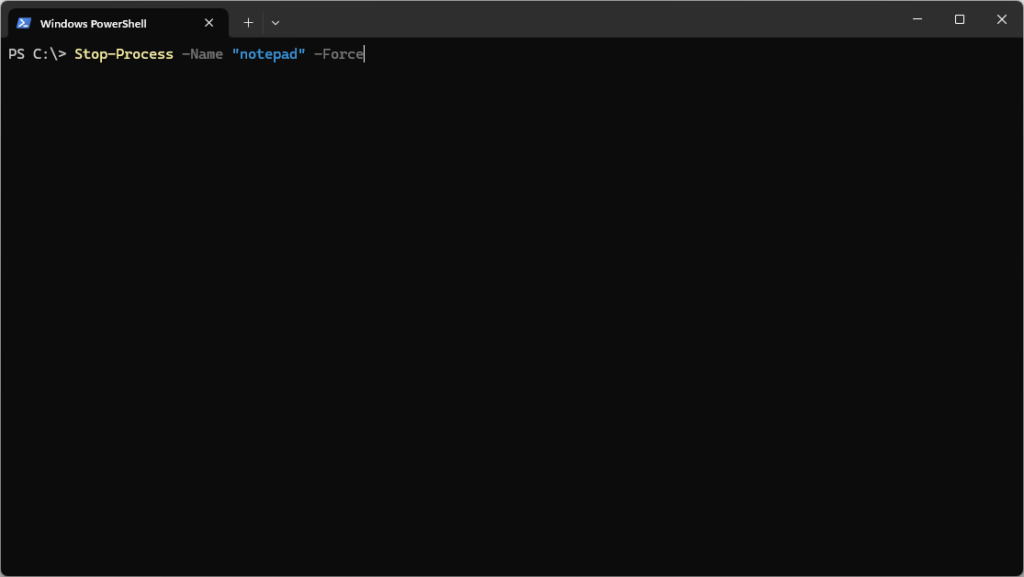
Advanced users sometimes use tools like Process Explorer (by Microsoft) for more control and monitoring of apps. It’s like Task Manager on steroids.
Download from the official Microsoft site here: Process Explorer
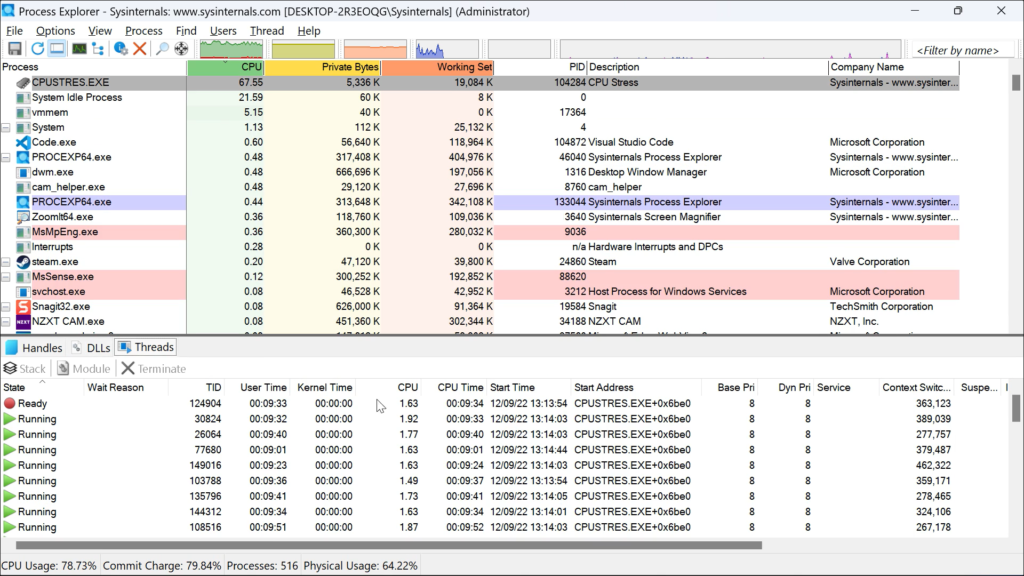
5. Last Resort: Manual Power Button
If all other force quit methods fail and your app remains completely unresponsive, using the manual power button is the last resort. To do this, press and hold the power button on your device until the screen turns off. This action forces your PC to shut down, closing all running apps—including the troublesome one. After the device powers down, press the power button again to reboot your computer. Keep in mind, this method can result in data loss, especially if you had unsaved work open in any program. Always try other force quit methods first, and only use the manual power button when absolutely necessary to regain control of your device.
Preventing Application Crashes
The best way to deal with app freezes is to prevent them from happening in the first place. Keeping your operating system and all your apps updated to the most recent versions is essential for stability and security. Regular updates deliver important security patches, bug fixes, and performance improvements that help reduce the risk of app freezes. In addition, performing routine maintenance tasks—like clearing temporary files and monitoring system resources—can keep your Windows computer running smoothly. By staying proactive with updates and maintenance, you’ll minimize disruptions and enjoy a more reliable computing experience.
Can Force Quit Cause Data Loss?
Yes — if you force quit an app that has unsaved work (like Word or Photoshop), you might lose changes. Always try to save before quitting if possible.
Best Practices for Force Quitting on Windows
To safely and effectively force quit apps on Windows, it’s important to follow a few best practices. Always start with built-in methods like keyboard shortcuts or Task Manager before moving on to more advanced options such as Command Prompt. Use caution when entering commands in Command Prompt, as incorrect usage can affect system stability. Reserve the manual power button for situations where all other force quit methods have failed, since it carries a higher risk of data loss. Finally, keep your operating system and apps up to date to reduce the chances of app freezes. By following these best practices, you’ll be able to force quit apps confidently while protecting your data and maintaining a stable Windows environment.
FAQ: Force Closing Apps on Windows
- Q: What’s the key to force close on Windows?
A: Alt + F4 closes the current window, and Ctrl + Shift + Esc opens Task Manager for force quitting. - Q: How do I force quit on a Windows PC without Task Manager?
A: Use Alt + F4, or open Command Prompt and run taskkill. You can also switch back to Command Prompt if desired. - Q: Does force quitting harm my computer?
A: It doesn’t harm your PC, but be aware it can lead to unsaved data loss in the affected application. - Q: What should I do if force quitting doesn’t work?
A: If force quitting doesn’t work, try restarting your Windows computer. Restarting can often resolve technical issues and unfreeze unresponsive applications. - Q: Can I use the settings menu to force quit apps?
A: Yes, you can use the settings menu. Go to Settings, select Apps, find the unresponsive app, and terminate it. This provides a user-friendly alternative to keyboard shortcuts or command-line methods. - Q: How can I prevent issues with unresponsive apps?
A: Keep your Windows computers updated with the latest security updates. Regular updates help avoid technical issues and improve system stability.
Conclusion: Mastering How to Force Quit on Windows
Knowing how to force quit on Windows is essential for troubleshooting stuck or frozen apps. Whether you prefer using the Task Manager, keyboard shortcuts, or even the command line, these methods give you full control when things go sideways.
Remember, always try to save your work before force quitting. And if this happens often, it might be time to check for software updates or system issues.
For advanced control, explore other tools in Microsoft’s Sysinternals Suite. Tools like Process Monitor, Process Explorer, and Autoruns give you deep visibility into what’s running, what starts with Windows, and what might be causing instability.
Want to learn more? Check out our guide on how to zip a file in Linux to expand your multitool tech skills across systems.
Keep calm and close apps like a pro.

